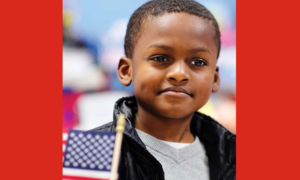Before the Older Americans Act in 1965, there was no Medicare, no meals-on-wheels, no multi-purpose senior centers – all now part of a massive network of national services for the elderly that along with Social Security has helped to slash poverty among the aged from 35 percent in 1960 to 10 percent today.
Now a coalition of the nation’s most visible youth serving groups is drafting the Younger Americans Act with hopes that it will provide similar success for teen programs all over the country.
The grand design is to shape a comprehensive national youth policy to help young people pass from adolescence to a productive adulthood. Plans call for mobilizing state government and local communities to support existing youth programs and, if necessary, develop new programs. The draft legislation calls for up to $2 billion in federal funds, 95 percent of which would go directly to state and local programming.
“This is not a federal solution for youth,” said Gordon Raley, president of the umbrella National Collaboration for Youth. “We want to provide assistance to the states. When we give communities resources to mobilize, they start to act. State agencies would help in planning and implementing programs.”
In large part, the youth idea is modeled after the Older Americans Act, which left much of the program development to the states and local communities, said Raley. “We want to emphasize the positive features,” he said. “Violence is not mentioned in the draft. We’re not trying to keep kids from doing things – we’re trying to encourage them to develop.”
The proposal seeks to provide children and youth with five basic resources promoted by America’s Promise-the Alliance for Youth: continuous relationships with caring adults; safe places with organized activities during non-school hours; physical and mental health care; development of marketable skills, and opportunities to participate in community service.
The coalition drafting the legislation is made up of the National Collaboration for Youth, United Way of America, Leadership 18 (the top national agencies that receive funds from United Way, such as the Boy Scouts of America and Junior Achievement) and America’s Promise – The Alliance for Youth. The panel also includes a youth member, Phillip Lovell, 19, of Indianapolis, a political science major at Georgetown University and a part-time staffer at the National Crime Prevention Council.
Coalition representatives expect a bipartisan bill will be introduced in Congress in June or July. The bill is “nearing final draft form,” according to Raley. “We’ll take it to the Hill and find someone to champion it.”
“It helps put children and youth, as a national priority, at the forefront of how we invest in communities,” said Melinda Baskin Hudson, senior vice president of America’s Promise, based in Alexandria, Va. She said the bill has the backing of retired Gen. Colin L. Powell, chairman of America’s Promise.
While the proposal would encourage coordination between the federal and state government agencies, the vast majority of funds would wind up in local youth programs supporting face-to-face youth work.
Local communities would be the hub of mobilization and implementation of the Younger Americans Act, with the program administered nationally by the Department of Health and Human Services. Most federal funds would go to the local level. The coalition organizations are proposing new funds for the act, not a reprogramming of existing funds – which generated enough opposition to kill the 1995 Youth Development Block Grant, sponsored by former Sen. Nancy Kasenbaum (R-Kans.), according to Georgia Deoudes, director of public policy for the United Way of America.
Of the $2 billion requested, 95 percent would go to state and local programming. In this scenario, a city the size of Charlotte, N.C., would receive $3-to-4 million, according to Raley. Also, 1.5 percent would be allocated for the developmental needs of American Indian youth and administered by various tribal governments. In addition, about 0.5 percent would be made available for youth living in outlying territories, and 3 percent for federal discretionary programs for youth in correctional facilities and in areas of concentrated poverty.
Under the proposal, existing community boards or new entities in local jurisdictions would be responsible for preparing, submitting and coordinating comprehensive plans. The boards would be appointed by the head of the local United Ways and chief elected local officials. States would distribute incentive funds among localities.
Examples of programs envisioned in the proposal include after school, weekend or summer activity; mentoring projects; community youth centers and clubs; character development activities; sports, recreation, music and environmental activity; health practices programs, and community service opportunity.
Contact: National Collaboration for Youth (202) 347-2080.
– Hollie I. West






























